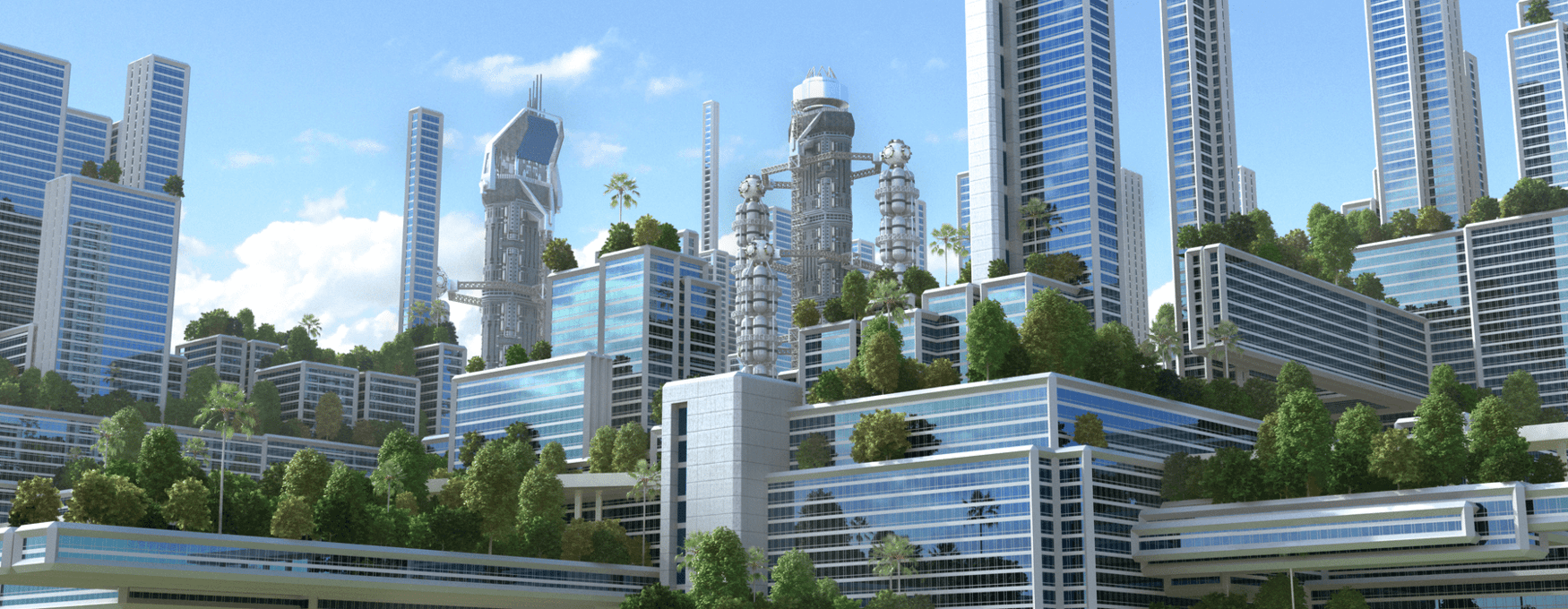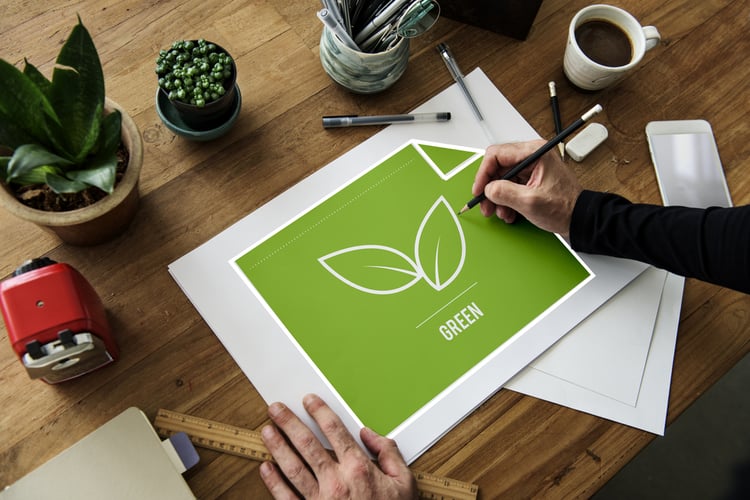5 Business Advantages of Green Buildings

To reduce the environmental impact of cities, sustainable construction is key. Keep in mind that buildings represent nearly 40% of the world’s emissions, and their total floor area will double by 2060. Unless the new buildings have green design features, emissions will continue to grow at the same pace.
However, the advantages of green buildings are not only environmental - they also have a lower ownership cost over time, and they get more attention from potential tenants. Also, in the case of NYC, a green building can help you meet several laws and regulations.
Get a green design for your next project, and cut your utility bills and emissions.
1) Green Buildings Save on Energy and Water Bills
Thanks to their efficient design, green buildings can operate with less energy and water than traditional constructions. The specific savings required can change depending on what certification the building owner is seeking, but using water and energy more efficiently is a hallmark of green buildings.
For example, LEED requires at least 20% water savings with respect to the baseline required by standards, and an energy efficient design according to ASHRAE 90.1 (or an equivalent standard). A building that doesn’t meet one of these requirements cannot become LEED certified, no matter how high it scores in other performance categories.
The EDGE certification also focuses on energy and water conservation, requiring 20% savings in both areas, along with a 20% reduction in the embodied energy in construction materials.
2) Green Buildings Have Healthier Indoor Environments

Creating a healthy indoor environment is a priority area in many building rating systems, especially the WELL certification. The following are some common measures used to improve indoor environmental quality or IEQ:
- Avoiding construction materials that emit large amounts of chemicals by offgassing.
- Using ventilation above code requirements, to keep a constant supply of fresh outdoor air.
- Not allowing tobacco smoke in indoor areas, and outdoor areas close to doors and windows.
Human health and indoor air quality are strongly related, especially in modern cities where we spend 90% of our time indoors. For example, volatile organic compounds (VOC) can cause eye and nose irritation with short-term exposure, and long-term exposure has been linked with some forms of cancer.
3) Green Buildings Have a Marketing Advantage
The benefits described above are not only attractive for building owners, but also for potential tenants. Paying lower utility bills and having better air quality are strong selling points, which can convince a tenant to sign the contract. If the building is already certified under a rating system like LEED or WELL, the owner can display the plaque where it can be clearly seen.
In New York City, buildings are also subject to energy grades under Local Law 33 of 2018. Unlike an green building certification, which is optional, this grade is mandatory and it must be displayed no matter how low you score. Buildings with low energy grades are less attractive for tenants, since they will expect higher electricity and gas bills.
4) Green Buildings Qualify for More Incentive Programs

Energy incentive programs vary depending on where a building is located - some are offered by state agencies, while others are managed by utility companies. There are programs that target energy efficiency directly, while others focus on solar power and other renewable energy systems.
Depending on how an incentive program is designed, there may be a list of predetermined measures that are eligible for incentives. For example, these may include LED lighting and space heating equipment with a specified efficiency rating. Other programs are based on performance, where you can use any combination of measures as long as the building saves energy.
In New York City, two of the best known programs are NY-Sun (solar power) and the Con Edison rebate program for homes and businesses.
5) Green Buildings Exceed Local Energy Codes and Regulations
Green building certifications have stringent design requirements, which are more demanding than energy codes. However, this also means that developers must no longer worry about most code requirements, since they are already surpassed. There may still be specific requirements and paperwork, but the energy performance requirements are already covered.
In the case of NYC, green buildings can also meet Local Law 97 of 2019 more easily. This law is part of the Climate Mobilization Act, and it applies emission limits for buildings larger than 25,000 sf starting from 2024. However, since green buildings are already efficient, their emissions are already below the limit in most cases.
Conclusion
The benefits of green buildings are not only environmental - they make sense financially for their owners, and occupants benefit from an improved indoor environment. Green design features can also be used to meet local energy codes, and specific laws and regulations such as LL97.

Michael Tobias
Michael Tobias, the Founding Principal of NY Engineers, currently leads a team of 50+ MEP/FP engineers and has led over 1,000 projects in the US
Join 15,000+ Fellow Architects and Contractors
Get expert engineering tips straight to your inbox. Subscribe to the NY Engineers Blog below.



